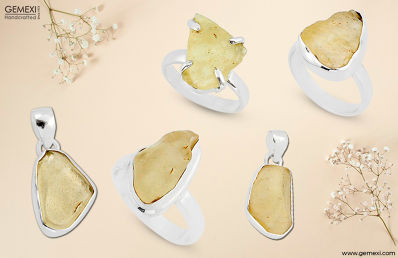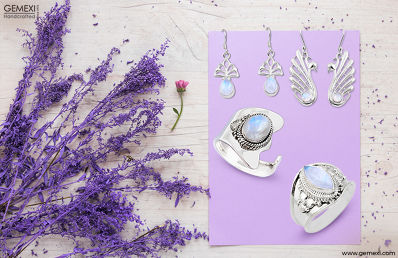Easy Ways To Identify Real Pearls
By Gemexi Team | Gemology- Updated On Mar 20, 2020

Pearls are timeless. Their simple, elegant beauty transcends time and that’s why women of all ages vouch for their love of pearls. While in every decade some jewelry style has been popular, for example, chokers are currently in a trend, pearls have always stayed in fashion. Pearls are so versatile that wearing the same neckpiece for a corporate event and a family function will exude varying aura making you look different yet classy every single time. Though a simple string of white pearls can be worn for every occasion, pearls come in various colors and shapes which increases their appeal and versatility.
Pearl jewelry becomes even more beautiful when you recall how nature makes them. Pearls are formed inside oysters when an irritant (usually a parasite) finds its ways inside and as a defense mechanism, the oyster releases fluid to protect itself. When layer upon layer of this fluid, called nacre, is deposited over the irritant, the pearl is formed. With the advent of technological innovation, pearls can today be made inside labs, but they cannot be called real pearls. There are various ways of manufacturing pearls artificially –through solid glass bead imitation, waxed glass beads imitation, synthetic beads with shell powder, etc. The market is literally filled with these fake pearls being passed on as real ones. So how do you identify natural peals and distinguish the fake ones? There are quite a few ways you can do so. Take a look.
#1 Real pearls are unique creations of nature and thus every piece cannot look and feel the same. If you want to identify if your pearls necklace is real or fake, observe and decide. You can do so by gently touching the surface of the pearls and minutely observing if all have similar shape, size, and luster. If so then you are probably holding a fake piece because natural pearls cannot look and feel the same while artificially created ones can.
#2From a distance a string of original pearls may look alike. But when observed closely, probably with a magnifying glass, you would notice that every pearl is different in shape and size. While the difference may be minuscule, they will be different. But if you are holding a seemingly perfect pearl, you are most likely holding a fake one!
#3 Real pearls are cool irrespective of the weather conditions. On the other hand, fake ones made of plastic are warm. This is one of the easiest tests you can do to identify real pearls. Hold them on your hand and feel the coolness. If you don’t, the pearls are fake. Moreover, real pearls are lightweight while fake ones are considerably heavier.
#4 One of the most common tests to identify real pearls is holding the pearls in your hand and rubbing them. If they feel rough and uneven then you are holding real pearls but if there is no friction and the pearls move smoothly against each other, they are fake ones. If you cannot identify their authenticity by rubbing them on your palms, another common test is to rub the pearls against your tooth. Real pearls will feel gritty whereas plastic-made ones won’t. When you are running real pearls you need not worry about them losing luster because in spite of some pearl powder coming off, original pearls will continue to shine.
#5 Real pearls do not make clunky sounds when shaken and knocked. They have a soft sound because they are not hollow from within. On the other hand, if you shake fake pearls they will have a tinny sound which will immediately give away their plasticity.
#6 Quality pearls often have an overtone that increases their value. The subtle colors that can only be seen when the pearl is placed against light not only accentuate their beauty but also becomes a stamp of authenticity. It is hard to find overtones on fake pearls though shaded pearls are easily available in the market they do not play with light as real pearls do.
#7 Closely linked to the above point, another test of authenticity is the reflective nature of the pearl. Natural pearls are reflective thus when you hold them against the light you can see the reflection. But this won’t be visible when fake pearls are placed against the light.










0 Comments
Write Comments